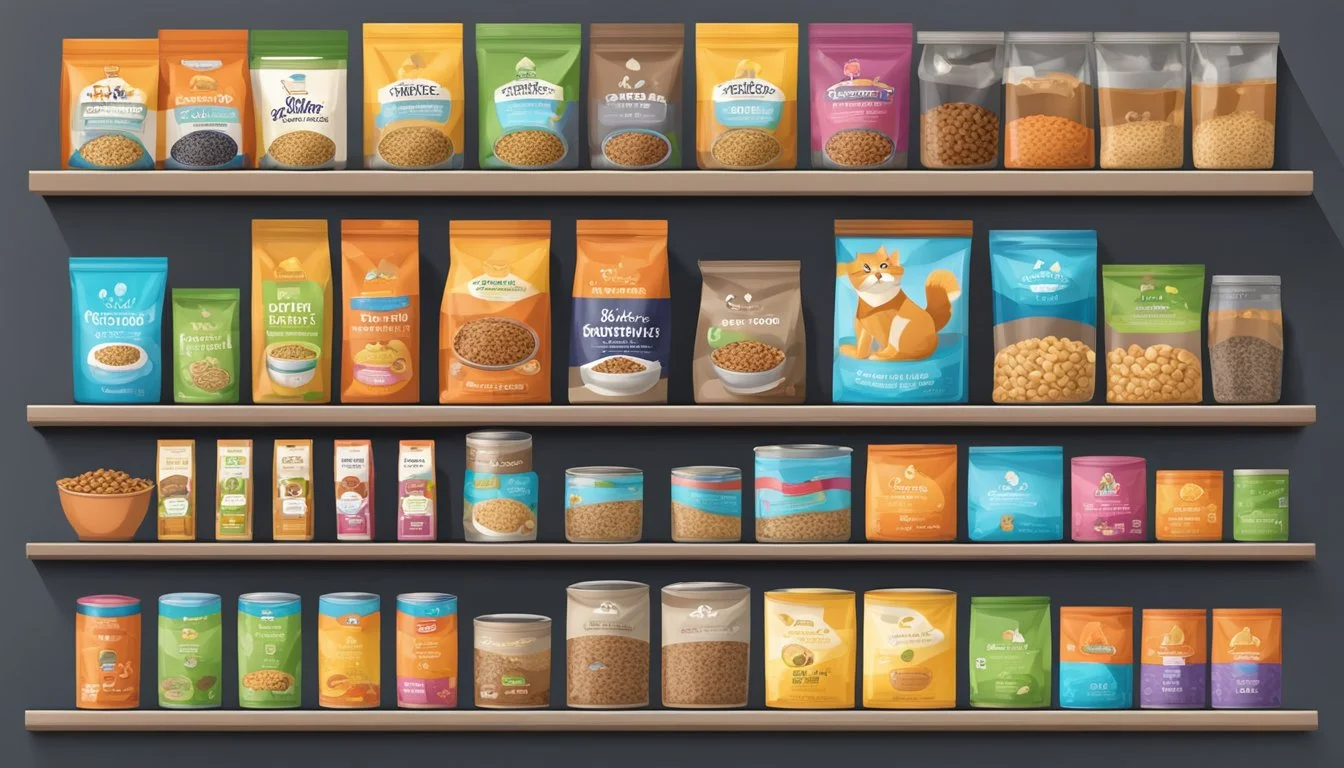Feeding your pet a balanced and nutritious diet is crucial for their health and well-being. A high-quality commercial pet food formulated for your animal’s specific life stage and health needs is often the best choice for most pet owners. These foods are designed to provide complete nutrition and are convenient to use.
For dogs, you can supplement their diet with certain human foods in moderation. Carrots, for example, make excellent low-calorie treats and are rich in vitamins and fiber. However, it’s important to avoid feeding your dog potentially harmful foods like raw meat, which may contain dangerous bacteria.
If you’re considering homemade meals for your pet, consult with a veterinarian or veterinary nutritionist first. They can help you create a balanced diet that meets all of your pet’s nutritional needs. Remember, proper portion control and feeding schedules are just as important as the food itself in maintaining your pet’s health.
Understanding Your Pet’s Dietary Needs
Proper nutrition is crucial for your pet’s health and wellbeing. Different species, life stages, and health conditions require tailored dietary approaches to meet specific nutritional needs.
Nutritional Requirements by Species
Dogs and cats have distinct dietary needs. Dogs are omnivores, requiring a balance of proteins, carbohydrates, and fats. Aim for a diet with 18-25% protein and 10-15% fat for adult dogs.
Cats are obligate carnivores, needing higher protein levels. Their diets should contain 30-40% protein and 15-20% fat. Essential nutrients for cats include taurine and arachidonic acid.
For both species, look for foods with high-quality animal proteins as the main ingredient. Avoid excessive fillers and artificial additives.
Life Stage Considerations
Puppies and kittens need more calories and nutrients for growth. Choose foods labeled for “growth” or “all life stages” with higher protein and fat content.
Adult pets require maintenance diets with balanced nutrition. Senior pets often benefit from lower-calorie foods with added joint support.
Pregnant and nursing animals have increased nutritional demands. Provide foods with higher calorie and nutrient density during these periods.
Health Conditions and Special Diets
Pets with specific health issues may require specialized diets. Overweight pets benefit from low-calorie foods rich in fiber to promote satiety.
Pets with kidney disease often need diets low in phosphorus and sodium. Those with allergies may require limited-ingredient or hypoallergenic diets.
Diabetic pets typically do well on high-fiber, low-fat diets. Consult your veterinarian for personalized dietary recommendations based on your pet’s specific health needs.
Choosing the Right Food
Selecting appropriate food for your pet is crucial for their health and well-being. Consider factors like age, breed, size, and any specific dietary needs when making your choice.
Types of Pet Food
Dry kibble is a popular option due to its convenience and dental benefits. It’s easy to store and typically more affordable than other types. Wet food provides higher moisture content, which can be beneficial for pets with urinary issues or those who don’t drink enough water.
Semi-moist food offers a balance between dry and wet options but often contains more preservatives. Freeze-dried and dehydrated foods retain more nutrients but are generally more expensive. Fresh and refrigerated pet foods have gained popularity for their minimal processing and high-quality ingredients.
Consider your pet’s preferences and your budget when choosing between these options. You may also mix different types to provide variety and balanced nutrition.
Reading and Interpreting Food Labels
Pet food labels can be confusing, but understanding them is essential for making informed choices. Look for the AAFCO (Association of American Feed Control Officials) statement, which indicates the food meets basic nutritional requirements.
The ingredients list is crucial. Ingredients are listed by weight, with the first few being the most prevalent. Look for named meat sources (e.g., “chicken” rather than “meat by-products”) as the primary ingredients.
Pay attention to:
- Guaranteed analysis: Shows minimum percentages of protein and fat, and maximum percentages of fiber and moisture
- Nutritional adequacy statement: Indicates if the food is complete and balanced for your pet’s life stage
- Feeding guidelines: Provides recommended serving sizes based on your pet’s weight
Natural and Organic Options
Natural pet foods contain ingredients from plant, animal, or mined sources without chemical alterations. These foods often appeal to pet owners seeking minimally processed options. However, “natural” doesn’t always mean healthier or more nutritious.
Organic pet foods must meet strict USDA standards. They’re made with ingredients grown without synthetic fertilizers, pesticides, or GMOs. Organic meat comes from animals raised without antibiotics or growth hormones.
While natural and organic options can be beneficial, they’re often more expensive. Consider your pet’s specific needs and consult with your veterinarian to determine if these options are worth the extra cost for your pet.
Homemade Diets and Raw Feeding
Some pet owners opt for homemade diets or raw feeding to have more control over their pet’s nutrition. Homemade diets allow you to choose fresh ingredients and avoid preservatives. However, creating a balanced diet requires careful planning and consultation with a veterinary nutritionist.
Raw diets, consisting of uncooked meat, bones, and organs, aim to mimic a pet’s ancestral diet. Proponents claim benefits like improved coat condition and dental health. However, raw diets carry risks of bacterial contamination and nutritional imbalances.
If considering these options:
- Consult your veterinarian or a pet nutritionist
- Ensure the diet meets all your pet’s nutritional needs
- Follow strict food safety practices to prevent contamination
- Monitor your pet’s health closely for any changes
Frequently Asked Questions
Proper nutrition is crucial for your dog’s health and wellbeing. Many pet owners have questions about feeding their canine companions correctly.
What can I provide to my dog as an alternative to commercial dog food?
You can offer your dog homemade meals using lean meats, vegetables, and whole grains. Cooked chicken, turkey, or lean beef combined with brown rice and steamed vegetables can be nutritious options.
Fish like salmon provides beneficial omega-3 fatty acids. Always consult your veterinarian before making major changes to your dog’s diet.
What are the essentials of a healthy everyday diet for dogs?
A balanced dog diet should include protein, carbohydrates, fats, vitamins, and minerals. High-quality commercial dog foods often provide these essentials in the right proportions.
Ensure fresh water is always available. Avoid feeding table scraps or foods toxic to dogs like chocolate, onions, and grapes.
How can I make sure my homemade dog diet is balanced and nutritious?
Work with a veterinary nutritionist to develop a balanced homemade diet plan. Include a variety of protein sources, complex carbohydrates, and vegetables.
Add supplements as recommended by your vet to ensure your dog gets all necessary nutrients. Regularly monitor your dog’s weight and overall health.
How can I determine the most suitable food choices for my dog?
Consider your dog’s age, size, breed, and activity level when choosing food. Puppies, adult dogs, and seniors have different nutritional needs.
Look for foods appropriate for your dog’s life stage and health condition. Read ingredient labels and choose products with high-quality protein sources listed first.
What are filling and healthy food options for my dog?
Lean meats like chicken, turkey, and fish are healthy and satisfying. Vegetables such as green beans, carrots, and sweet potatoes provide fiber and nutrients.
Plain, cooked oatmeal or brown rice can be filling additions. Always introduce new foods gradually and in moderation.
What are appropriate breakfast foods to feed my puppy or adult dog?
You can feed your dog their regular kibble or wet food for breakfast. If you want to offer variety, scrambled eggs (without seasoning) are a protein-rich option.
Plain, low-fat yogurt provides probiotics. A small amount of cooked oatmeal with a bit of pumpkin puree can be a nutritious morning meal.


